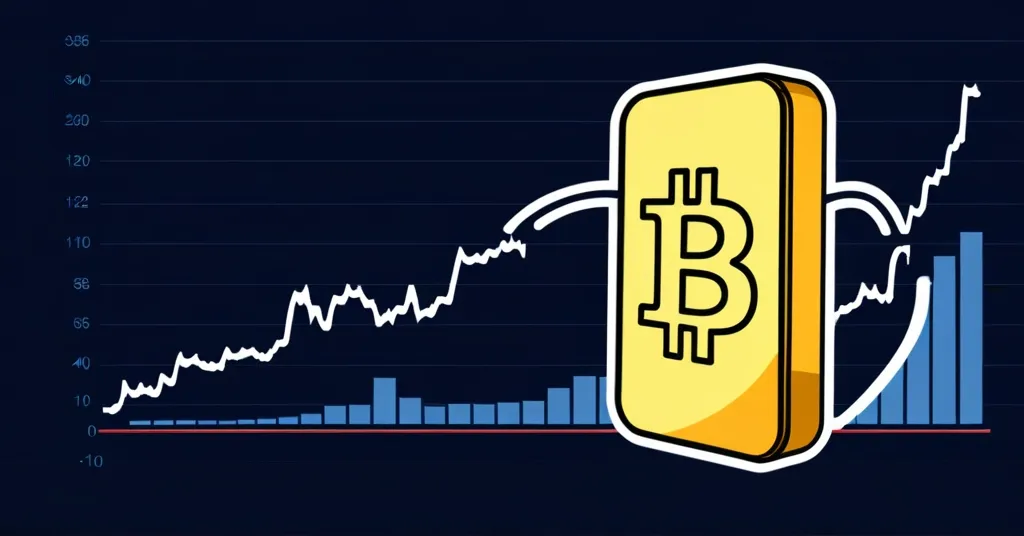CZ Highlights Bitcoin’s Shift to Reserve Asset Amid Declining On-Chain Activity

CZ Weighs in on Bitcoin’s Evolving Role Amidst Low On-Chain Activity
Changpeng Zhao, the former CEO of Binance, isn’t just talking out of his hat; he’s pointing out a major shift in Bitcoin’s use case. As Bitcoin’s on-chain volume continues to lag behind its 2021 peak, CZ suggests it’s morphing from a transaction currency into a more stable reserve asset, thanks to the surge in Bitcoin ETFs.
- Bitcoin’s on-chain volume significantly lower than 2021 peak
- CZ suggests Bitcoin becoming a reserve asset
- Bitcoin ETFs contributing to lower on-chain activity
- Bitcoin’s volatility at its lowest since Q4 2023
- Current Bitcoin price: $97,190
Bitcoin’s on-chain activity, or the number of transactions recorded directly on its blockchain, has been notably subdued lately. CZ’s take on this is both fascinating and a bit of a gut-check for the crypto community. “My gut feeling is that BTC is now more of a reserve asset and less of a transaction currency due to high fees and long block times,” he said. “A lot of the new money is buying ETFs, which don’t reflect in on-chain TX. I could be wrong.” His comments suggest a departure from Bitcoin’s original vision as peer-to-peer electronic cash, stirring up a debate about its future role.
This perspective is echoed by Chris Kuiper, Director of Research at Fidelity’s crypto unit. He pointed out that the rise of Bitcoin ETFs has led to an emptier mempool—the waiting area for transactions before they’re added to the blockchain. Kuiper’s insight supports CZ’s observations, indicating that as investors flock to ETFs, direct transaction volume on the Bitcoin network decreases.
Despite the current low on-chain activity, some analysts remain hopeful. Bitcoin’s volatility has hit levels not seen since the fourth quarter of 2023, leading some to predict a major price movement. At the time of writing, Bitcoin is trading at $97,190, a figure that showcases both its resilience and the market’s cautious optimism.
The popularity of Bitcoin ETFs isn’t just a trend; it’s reshaping how investors interact with and perceive the cryptocurrency. ETFs provide a way for traditional investors to get a piece of the Bitcoin action without the hassle of managing a digital wallet or dealing with blockchain transactions. This shift towards viewing Bitcoin as a reserve asset, much like gold, could be a double-edged sword. On one hand, it brings Bitcoin closer to mainstream financial acceptance; on the other, it might dilute its original mission as a decentralized alternative to traditional finance.
But let’s not kid ourselves—Bitcoin’s journey is far from over. Its ability to adapt and evolve, even as it faces challenges like high transaction fees and competition from other cryptocurrencies, speaks to its enduring appeal and potential. As we navigate this transition, the crypto community remains divided. Some see the move towards a reserve asset as a natural evolution, aligning Bitcoin more closely with assets like gold. Others worry that this shift could undermine the very principles that made Bitcoin revolutionary in the first place.
From a Bitcoin maximalist’s perspective, the shift to a reserve asset might be seen as a deviation from Bitcoin’s core purpose. They argue that Bitcoin should remain focused on its original intent as peer-to-peer electronic cash, not merely a store of value. Yet, as CZ and others point out, the reality on the ground is shifting, and Bitcoin’s role is evolving whether we like it or not.
And let’s not forget the altcoins. While Bitcoin may be taking a nap on the transaction front, other cryptocurrencies are stepping up, filling niches that Bitcoin may not serve well. Ethereum, for instance, offers smart contracts and faster transaction times, complementing Bitcoin’s role in the broader crypto ecosystem.
This shift in Bitcoin’s role could also be seen through the lens of “effective accelerationism” (e/acc), a philosophy that champions rapid technological advancement and disruption. If Bitcoin’s evolution into a reserve asset accelerates broader financial innovation and brings more people into the crypto space, then perhaps it’s a step in the right direction. However, it’s crucial to remain critical and question whether this shift aligns with the long-term vision of decentralization and financial freedom.
Key Takeaways and Questions
- What is causing Bitcoin’s low on-chain volume?
The popularity of Bitcoin ETFs, which do not reflect in on-chain transaction volumes, is a major factor. CZ suggests Bitcoin is becoming more of a reserve asset due to high fees and long block times.
- How are Bitcoin ETFs impacting Bitcoin’s role?
Bitcoin ETFs are shifting Bitcoin’s role from a transaction currency to a reserve asset, as they allow investors to gain exposure without directly transacting on the blockchain.
- What does the low volatility of Bitcoin indicate?
Low volatility, as seen in Bitcoin since Q4 2023, could precede a major price movement according to some analysts.
- Is a new Bitcoin bull run possible despite current fundamentals?
Yes, despite the current low on-chain performance, a new bull run is considered possible, supported by the views of CZ and Chris Kuiper on the impact of ETFs and Bitcoin’s reserve asset status.
- What is the Bitcoin maximalist view on its evolving role?
Bitcoin maximalists argue that Bitcoin should remain focused on its original purpose as peer-to-peer electronic cash, not merely a reserve asset.
- How do altcoins fit into this evolving landscape?
Altcoins are filling niches that Bitcoin may not serve well, such as faster and cheaper transactions, thereby complementing Bitcoin’s role in the broader crypto ecosystem.



